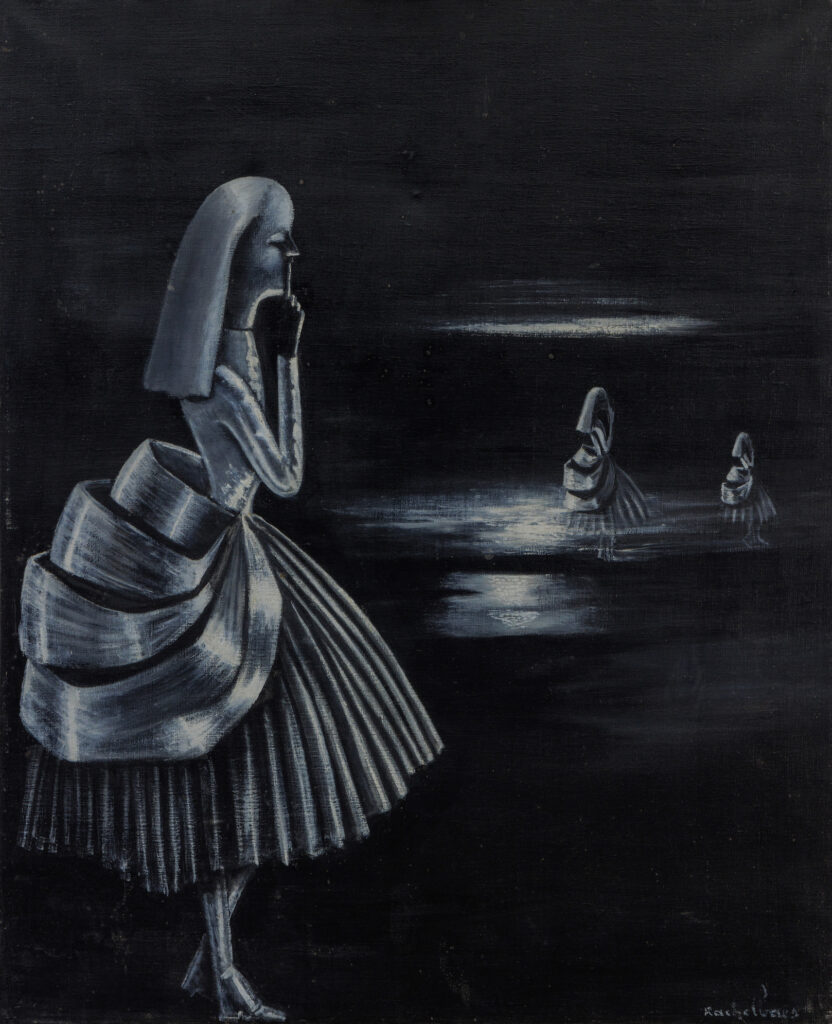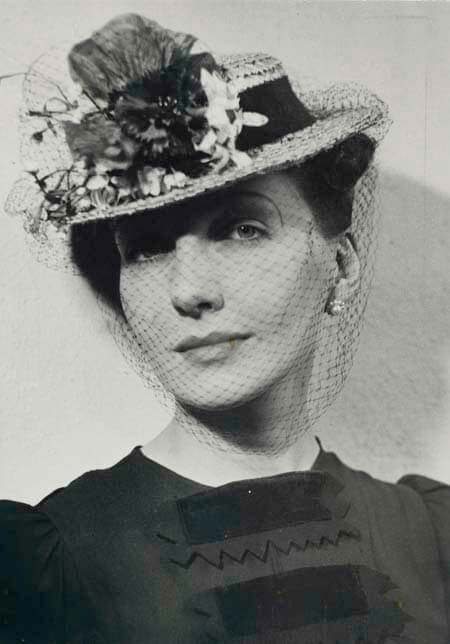Your currently viewing RAW Modern | Switch to RAW Contemporary
L'Écho du Silence, 1964
Catalogue essay by Blanche Llewellyn
“I am not a Surrealist painter, I am a Surrealist that paints” Rachel Baes wrote in her diary. This did not however prevent Baes from frequenting both the Surrealist circle in Brussels and the members of the French group. In 1945 she met Paul Éluard and his wife, Nusch, whose portrait she painted. The following year Éluard published a poem in which he described Baes: “As a lonely woman / Who draws instead of talking / In the desert / And so as to see before her […]”. During this period, Baes associated with numerous artists and writers on the Parisian scene, among them Georges Bataille, Jean Cocteau, Marcel Lecomte, E. L. T. Mesens, and Magritte (she performed the role of muse in some of Magritte’s amateur films.)
Convinced of the merit of her work, Wifredo Lam even introduced her to Breton in 1952. Under his guidance, she exhibited the following year at the “A l’Étoile scellée” gallery in Paris.
In 1940, her lover, Joris van Severen, founder in 1931 of the far-right Verdinaso (a Fascist political movement in Belgium) who, sus-pected of collaboration, was shot by the French military.
Following this tragedy, Rachel Baes abandoned the flower and landscape pictures that had earned her acclaim among her middle-class patrons. She now immersed herself in the dreamlike and sombre world of surrealism, channeling the pain she had endured: “The one and only freedom lies in dreams” she concluded at the time. Baes’ work became predominantly inhabited by female figures, and often young girls. Strange, mysterious little things, dressed like dolls, are depicted in airless rooms with an angst-ridden atmosphere and seem to subvert Breton’s cherished image of the child-woman, whose purity, and candidness he thought would facilitate access to the subconscious. Her girls do not possess the erotic qualities these artists invested in. Juggling with ambiguity, as if heralding the terrible events of the artist’s own life, these little girls appear prey to invisible demonic forces and are condemned to a tragic fate.
“L’Echo du Silence,” was painted in 1964, coinciding with her retirement from public life, in Belgium, two years previously. This marked a shift in Baes‘ focus, in which she concentrated on portraying local subjects – departing from her previous emphasis on interior settings – which allowed her to create a sombre and introspective atmosphere while still highlighting the vibrant colors of the figures as a central focus.
It is most likely that “L’Echo du Silence ” depicts the landscape of her local town Ixelles, particularly its peaceful ponds – a setting which Baes transformed into a dystopian and surreal landscape.
The title suggests themes of solitude, introspection, and the search for meaning within the depths of the mind. It hints at the persistence of certain memories and reflections, perhaps related to Baes’ career or her personal experiences – anticipating her eventual death in Belgium in 1983.
The repetitive motif of the figure in the painting also implies the distortion of hidden or unspoken thoughts when brought into the light – resonating within oneself and creating an enigmatic atmosphere that invites contemplation.

